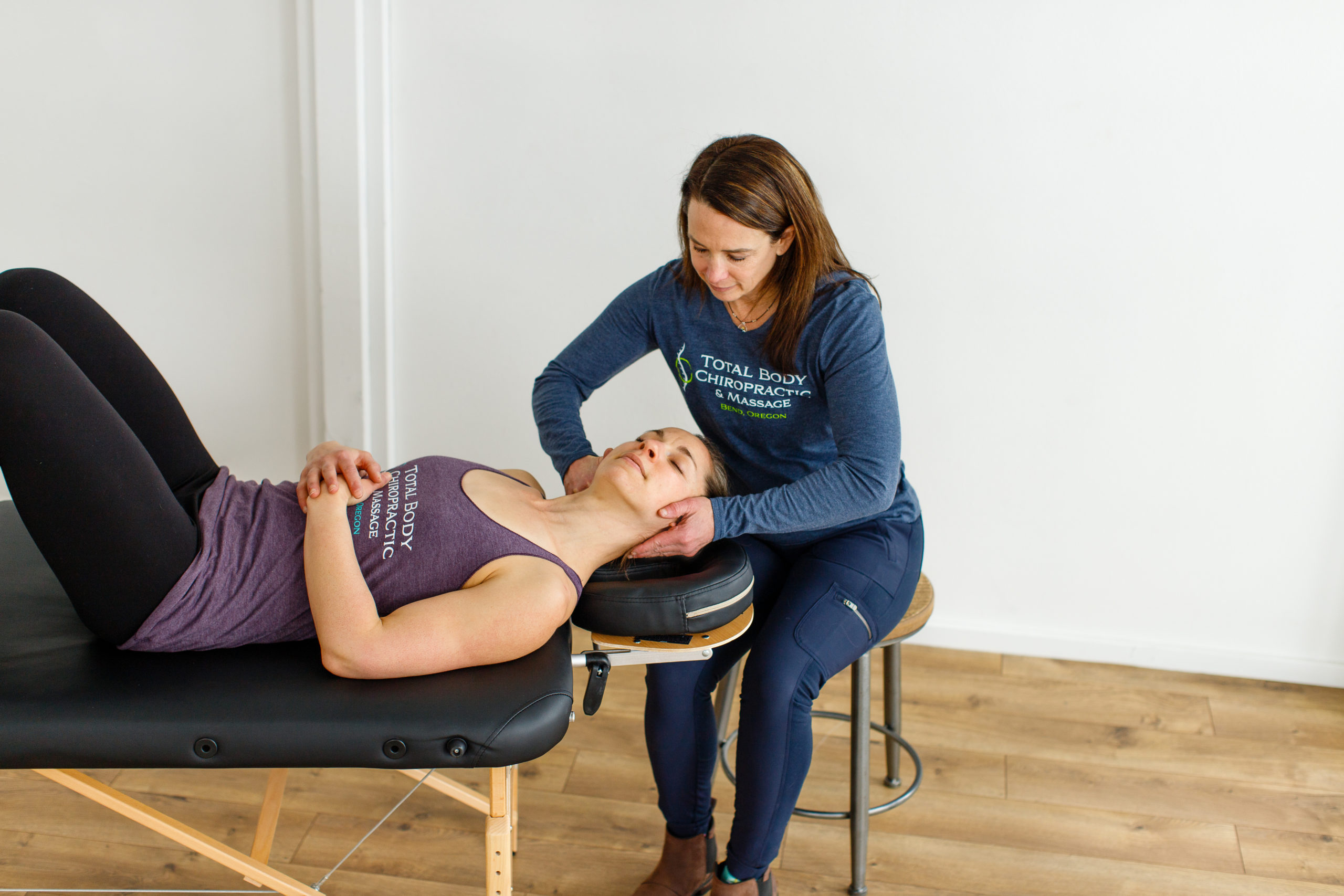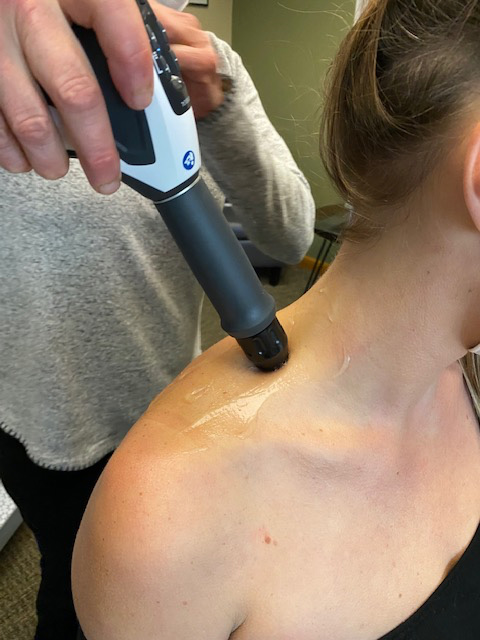A Comprehensive Guide to Chiropractic Care for Neck Pain
Neck pain is an unwelcome guest for many of us, often striking at the least opportune times. Whether it’s the aftermath of a long workday or an unexpected twist, a stiff neck can be disruptive to your daily activities and, frankly, a nuisance.
Chronic neck pain is a common problem that affects a staggering number of people globally. And, while over-the-counter medications offer temporary relief, chiropractic treatments promise—and often deliver—longer-lasting solutions. Plus, with advancements in the field, treatments like the Graston Technique and Shockwave Therapy are making waves (pun intended!) in providing relief from muscle tightness and chronic pain. By the end of this guide, you’ll have a clearer understanding of how chiropractic care might be the solution you’ve been searching for.
Understanding the Mechanics of Your Neck
The neck, or cervical spine, isn’t just a mere extension of our spinal column; it’s a complex structure responsible for supporting and moving our head, which weighs about 10-12 pounds!
Anatomy of the neck
The neck houses seven vertebrae, aptly named C1 through C7. These bones stack on top of one another, separated by discs that act as cushions for joint mobility, preventing the bones from grinding against each other. It’s not just bones though; the musculoskeletal system consists of a myriad of muscles, ligaments, and nerves intertwine, ensuring our neck isn’t just strong but incredibly flexible.
How the neck supports the head
Think of your neck as a well-engineered architectural marvel. It balances the head, allowing it to pivot in various directions. This mobility comes courtesy of the atlas (C1) and axis (C2), the top two vertebrae. The atlas lets your head nod up and down, while the axis facilitates rotation. Talk about teamwork!
Role of vertebrae and muscles
While the vertebrae provide a protective conduit for the spinal cord, the muscles do the heavy lifting, figuratively and literally. Muscles like the sternocleidomastoid allow for rotation and flexion, whereas the trapezius stretches from the back of the neck down to the middle of the spine, helping with shrugging and tilting. The dance of these muscles and bones, harmonized with tendons and ligaments, grants us the range of motion we often take for granted.
Causes of Neck Pain

Now that you’ve had a peek into the mechanics, let’s explore what throws a wrench into this intricate machinery.
- Physical strain. From hunching over our desks, staring at screens, to sleeping in awkward positions, modern life hasn’t been kind to our necks. These everyday strains might seem trivial but accumulated over time? They’re a primary pain culprit.
- Accidents and injuries. Whiplash, commonly resulting from car accidents, is a jarring neck injury that occurs when the head is thrown forward and then jerked back. This sudden movement can stretch and tear neck muscles and ligaments. Neck pain can also arise from a sports injury when sudden movements or physical impacts strain the muscles, ligaments, or vertebrae in the cervical region.
- Age-related issues. As we age, so do our discs. They might dehydrate, shrink, or even herniate. Osteoarthritis is another age-associated culprit, resulting from the wear and tear of the protective cartilage on the bone.
- Diseases leading to neck pain. While less common, diseases like rheumatoid arthritis, meningitis, or certain cancers can manifest as neck pain. Always consult a physician if you suspect a more serious underlying cause.
How a Chiropractor Diagnoses Neck Pain

Arriving at our chiropractic clinic, you won’t just be asked to lie down on a table for an adjustment. The process is much more detailed and nuanced. So, what really happens behind those clinic doors?
Initial consultation
Before anything, your chiropractor will want to get to know you. This involves a detailed history, understanding your lifestyle, work habits, past injuries, and other health concerns. It’s all about piecing the puzzle together, and every detail counts!
Physical examination
Post the discussion, a hands-on examination follows. This isn’t just limited to the neck. The chiropractor might evaluate your spine, checking for alignment, muscle tone, and tenderness. Remember, our bodies are interconnected. Sometimes, a problem in the back could be causing neck pain!
Radiographic evaluation
Based on the initial findings, your chiropractor might order an X-ray. Why? To get a clear picture of your vertebrae. This helps rule out or confirm potential causes like fractures, tumors, or arthritis.
Chiropractic Treatment for Neck Pain

Once the root cause is identified, the chiropractor crafts a tailored treatment plan. But what exactly does chiropractic treatment entail?
Principles of chiropractic treatment
At its core, chiropractic care is about restoring the body’s innate ability to heal itself. The idea is that proper alignment of the spine will enable better nervous system functionality, reduce pain, and promote overall health.
How chiropractic adjustments work
Using hands or a small tool, the chiropractor applies a controlled, sudden force to a spinal joint. This is the famous “adjustment.” The goal? Improve range of motion and reduce nerve irritability. And if you’re wondering about the “cracking” sound, it’s just gas bubbles releasing from the joints!
Benefits and risks
Many patients report immediate relief from spinal manipulation. The benefits range from pain reduction, increased range of motion, to even improved mood and sleep. However, like any treatment, risks exist. Some might experience temporary discomfort, headaches, or fatigue. But these are generally rare and mild.
Common Questions About Neck Adjustments
What to expect during an adjustment?
It’s a mix of gentle movements and firm, quick actions. While the adjustment itself is quick, the entire session involves warm-up movements and often a cool-down phase with exercises or advice.
Is neck adjustment painful?
Not usually. While you might feel pressure, it shouldn’t be painful. Some discomfort might arise post-adjustment, similar to after a workout, but it typically subsides.
How many sessions are needed?
This varies based on the individual and the underlying issue. Acute conditions might need few sessions, while chronic problems could require ongoing care.
In our next segment, we’ll discuss the Graston Technique and shockwave therapy, two advanced methods increasingly employed in the chiropractic realm. Would you like me to proceed?
Advanced Chiropractic Treatment Options
While traditional adjustments remain a cornerstone of chiropractic care, advancements have introduced techniques that can further aid in the relief of neck pain.
1. Graston Technique

A unique, evidence-based form of instrument-assisted soft tissue mobilization, the Graston Technique allows for precise detection and treatment of fascial restrictions and muscle knots.
How does it work?
Using stainless steel instruments with unique edges and angles, practitioners scan and treat the affected area. These tools amplify the tactile sensation, helping in locating muscle knots and scar tissue.
Benefits of the Graston Technique
- Pain Reduction: The technique helps in breaking down scar tissue and fascial restrictions, thus alleviating pain.
- Increased Mobility: By reducing soft tissue restrictions, mobility is often enhanced.
- Enhanced Recovery: Improved blood flow to the treated area can expedite the healing process.
Potential Side Effects
While the Graston Technique is generally safe, patients might experience minor discomfort during the treatment. Temporary redness and soreness are also common but usually subside within a day or two.
2. Shockwave Therapy

A non-invasive method, shockwave therapy employs acoustic waves which help in alleviating chronic pain, especially pain associated with connective tissue disorders.
How does it work?
High-energy acoustic waves are delivered to the painful areas, leading to regenerative and reparative responses by the body. This stimulates cell repair, enhances blood circulation, and speeds up recovery.
Benefits of Shockwave Therapy
- Pain Management: Many patients report immediate pain relief post-session.
- Restores Mobility: By breaking down scar tissue and calcifications, it restores mobility.
- Non-invasive: It offers a surgical-free approach to pain relief.
Potential Side Effects
The most common side effect is temporary soreness or swelling at the treatment site. Occasionally, minor bruising might occur, but these are transient and usually resolve rapidly.
Both the Graston Technique and shockwave therapy highlight how chiropractic care has evolved over the years, embracing technology and innovation to better serve patients.
Frequently Asked Questions about Chiropractic Care for Neck Pain
What are the common causes of neck pain that chiropractors treat?
Neck pain can stem from a myriad of causes, some of the most common being:
- Physical strain or repetitive stress
- Accidents and injuries, particularly whiplash from car accidents
- Age-related wear and tear such as spinal stenosis
- Diseases such as osteoarthritis and rheumatoid arthritis
- Poor posture, especially from staring at screens
How do I know if chiropractic care is right for my neck pain?
It’s vital to consult a chiropractor for an assessment. They’ll take a detailed history, perform a physical examination, and may order imaging studies. With this information, they can recommend if chiropractic care is suitable or if another treatment modality might be more appropriate.
How soon can I expect relief after a chiropractic session?
Many patients experience some relief immediately after their first session. However, the extent and duration of relief can vary based on the underlying cause of the pain. Chronic issues might need multiple sessions before a notable improvement is felt.
Are there any risks associated with chiropractic adjustments to the neck?
While chiropractic care is generally safe, there can be risks. Potential side effects include temporary discomfort in the treatment area, headaches, or fatigue. Serious complications, like stroke, are exceedingly rare but have been reported.
Can I undergo chiropractic treatment if I’ve had neck surgery?
It depends on the type of surgery and its outcome. Always consult your surgeon and chiropractor before seeking chiropractic care post-surgery. They’ll work together to determine the best course of action.
Is it common to need ongoing chiropractic care for neck pain?
Some patients benefit from ongoing maintenance sessions, especially if their neck pain is chronic or recurrent. Regular adjustments can help manage pain and maintain mobility. Your chiropractor will recommend a care plan tailored to your needs.
Are there exercises I can do at home to complement chiropractic care?
Absolutely! Your chiropractor can suggest specific exercises and stretches that can help strengthen your neck muscles, improve flexibility, and reduce pain. Regularly practicing these can often expedite recovery and prevent future issues.
Get Neck Pain Relief with Total Body Chiropractic in Bend
Understanding the intricacies of chiropractic care can be a game-changer in managing neck pain. The field has advanced tremendously, offering a blend of traditional and innovative approaches to ensure patients receive the best possible care. Should you ever find yourself or someone you know grappling with neck pain, contact us today to get the pain relief you need.

